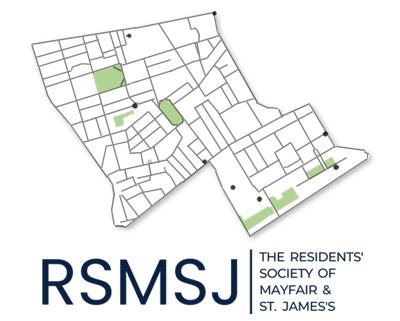Have Your Say on the Pedestrianisation of Oxford Street
Posted on: 01/05/2025Dear Members,
To support you and our neighbourhood, please find below a letter we have drafted (in bold) outlining key points on your behalf and addressed to the Mayor of London's office, opposing the pedestrianisation of Oxford Street.
Feel free to edit and add points of personal interest before sending it to TfL. Our intention is simply to provide a starting point and thought-starters to make it as easy as possible to share your concerns.
Please send your letter to haveyoursay@tfl.gov.uk and kindly copy communityliaison@rsmsj.com in cc.
In addition, here is a link to the consultation survey, which requires registration to complete: https://haveyoursay.
-----
To the TFL Team in response to the “Have Your Say” initiative on the proposed pedestrianisation of Oxford Street.
The RSMSJ is very concerned that the plans for pedestrianisation of Oxford St and annexation of surrounding small streets will irretrievably damage our area and quality of life. The lack of detail in the proposal – for example on how buses and traffic can be re-routed - exposes the fact that these proposals are not fit for deliberation, let alone implementation. No decisions can or should be made without rectifying this.
Oxford St - already blighted by a frightening level of crime – 40,000 incidents last year - will become a notorious London crime black spot: an empty, threatening dark space at night unsafe for people, and especially women, to venture at night. There are not remotely the police resources, nor is there an infrastructure, to provide adequate safeguards for what is proposed.
Residents will not be properly represented in the new Mayoral Development Corporation. This is not democratic: the people of Westminster vote for their Councillors, who are responsible for overseeing Council officers and Council decisions on the people’s behalf. We should have a say in what is decided in our neighbourhood: such gesture politics are destructive of representation rights.
Oxford St is currently working better. This is the main East-West artery of our capital city and deserves a joined-up scheme. Traffic re-routed from Oxford St will lead to the misery of gridlocked, polluted residential streets and will destroy the character of the very neighbourhoods that locals - and thousands of visitors - treasure.
Of particular concern:
- Rising Risk of Crime and Anti-Social Behaviour
Larger pedestrianised areas—especially if open late—will become hotspots for loitering, noise disturbances, petty crime, and vandalism without a corresponding increase in police presence or community safety measures.
- Impact on Emergency Services Response Times
Re-routed access will delay police, ambulance, and fire services, especially in time-sensitive situations where every second counts.
- Limited Access for Disabled and Elderly Residents
Reduced vehicle access will disproportionately affect those with limited mobility who rely on taxis or private vehicles for door-to-door travel, isolating vulnerable community members.
- Challenges for Local Deliveries and Services
Small businesses and households will face disruption due to delivery restrictions, inflexible access times, and increased costs associated with navigating pedestrian-only areas.
- Increased Traffic Congestion in Surrounding Areas
Redirecting vehicles away from pedestrianised zones will lead to severe congestion on nearby residential streets, increasing commute times, delivery delays, and emergency vehicle access issues.
- Air Pollution - Redistribution
While the pedestrianised area itself may benefit, displaced traffic will cause a significant rise in air pollution in surrounding neighbourhoods, undermining broader environmental goals and endangering residents’ health.
- Increased Noise Pollution in Adjacent Areas
More vehicles, idling engines, and longer travel times on diversion routes will raise noise levels, particularly affecting residential zones not designed for high traffic flow.
- Light Pollution and Night-Time Activity
Extended evening hours for businesses and public events in pedestrianised zones will result in increased artificial lighting, affecting nearby homes' privacy and sleep quality.
- Displacement of Public Transport Pressure
Closing off central routes will funnel bus and taxi services onto narrower streets, reducing service efficiency and increasing waiting times for all passengers.
- Negative Impact on Urban Wildlife and Green Corridors
Increased human activity, lighting, and noise—especially in areas that border parks, rivers, or community gardens—will disturb local birdlife, foxes, bats, pollinators, and other species that depend on quieter, less-trafficked spaces to survive and breed.
- Pressure on Green Spaces and Local Amenities
A rise in footfall will overburden parks, public toilets, and local infrastructure, reducing quality of life for those living in the area.
- Unintended Social Inequity
Benefits of pedestrianisation will be unevenly distributed, often favouring tourist and commercial interests over the daily needs of long-term residents and local families.
- Maintenance and Waste Management Concerns
Increased public usage will result in higher litter volumes and strain on cleaning services, particularly in the absence of increased budgets or resources.
- Uncertain Long-Term Economic Impact
While footfall may increase, not all businesses benefit from pedestrianisation, and many rely on passing car traffic and easy access for customers and suppliers.
- Risk of Overdevelopment and High-Rise Construction
Pedestrianisation paves the way for dense commercial redevelopment, with developers lobbying for high-rise housing or office towers under the pretext of “activation.” This will alter the historical and human-scale character of the area, increasing pressure on local services, schools, and infrastructure.
Thank you for listening, hearing out our concerns, and representing them for the upcoming proposals.
Best Regards,
The Residents' Society of Mayfair and Saint James's
